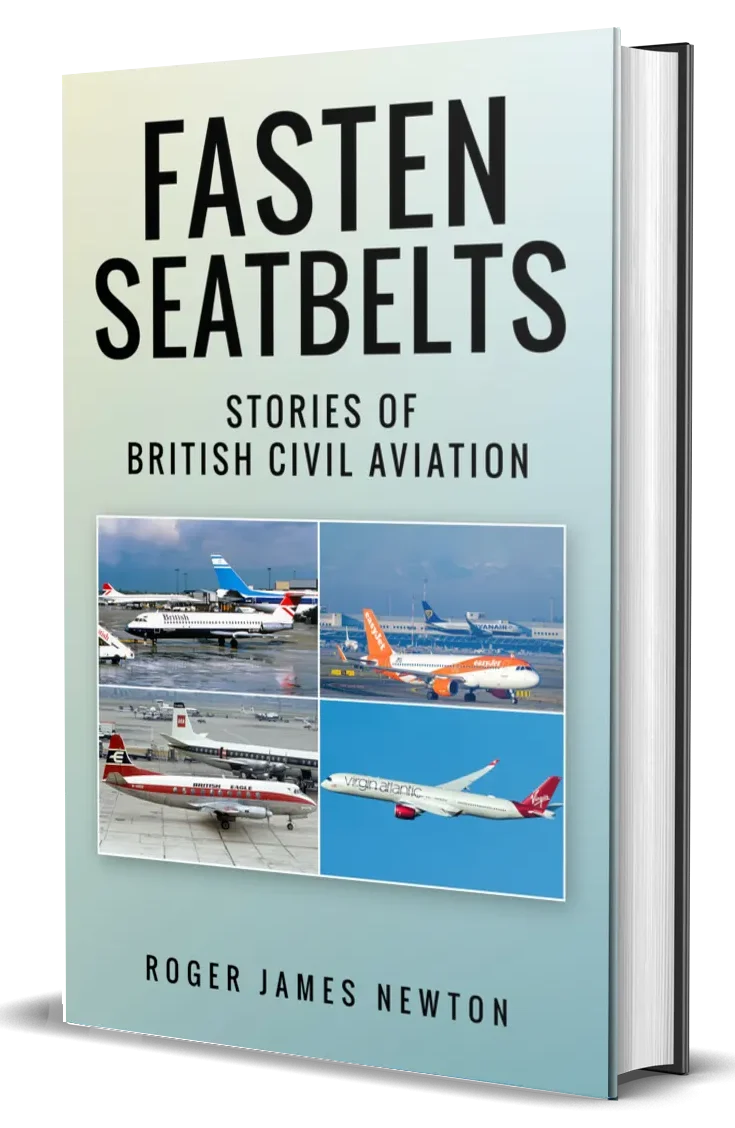When most people step onto a plane today, they do so with a sense of calm that would have been unimaginable a century ago. Modern civil aviation has built a reputation for safety that is unmatched by most other forms of mass transport. In Britain, this record is particularly impressive. British Airways, the country’s flag carrier, has not suffered a passenger fatality in more than forty years, since one of its aircraft suffered a runway engine fire. Other leading airlines such as EasyJet, Jet2.com, and Virgin Atlantic, along with Ryanair, which is now Europe’s largest airline, have never recorded a fatal accident in their histories. This achievement highlights how far aviation safety has come and how it continues to set standards for travel across the world.

In his book Fasten Seatbelts: Stories of British Civil Aviation, Roger James Newton gives readers the long view of how we reached this point. Safety has always been at the center of progress from the early days of fragile aircraft and unpredictable engines to today’s modern fleets supported by strict international regulations. Newton explains how Britain’s aviation industry grew through a mixture of state-backed airlines, innovative private operators, and engineering breakthroughs. Each era added to the framework that allows us to fly today with such confidence.
Recent assessments of airline safety show how these efforts continue to bear fruit. The respected website AirlineRatings.com recently placed British Airways seventeenth out of nearly four hundred global airlines, ranking factors such as incident history, governing body audits, safety initiatives, and pilot training. EasyJet and Ryanair also scored highly, particularly because of their younger fleets. These results underline how much effort airlines put into maintaining high standards and updating technology.
But safety is not just about machines. Newton’s book reminds us that regulation, training, and human oversight are just as important. From the introduction of compulsory seatbelts in the 1930s to today’s advanced pilot training programs, rules and education have always been part of the story. Newton traces these developments across each stage of British civil aviation, showing how lessons learned in the past remain relevant for the present.
One interesting challenge today is the age of aircraft. The International Air Transport Association (IATA) has reported that the average age of planes in service is rising. This is not due to neglect, but because demand for new aircraft has outpaced the ability of the duopoly of manufacturers, Airbus and Boeing, to deliver them. Airlines have responded by extending the life of their existing fleets while ensuring they remain safe and reliable. This balancing act shows the complexity of modern aviation, where growth and safety must be managed together.
Another remarkable change is the scale of today’s air travel. Newton gives the example of Manchester Airport, where in the 1960s, a good day meant seeing twenty to thirty movements. In June 2024, a power outage cancelled 140 scheduled flights in just six hours. That number represents more flights in half a day than could be seen in a week sixty years ago. The comparison shows the growth of air travel and the systems needed to keep it safe on such a scale.
Global passenger numbers also tell the story. The increase has been staggering, from 106 million in 1960 to nearly five billion in 2024. IATA expects further growth, provided the world economy remains stable in the coming years. With this expansion comes new challenges, such as cyber security. In July 2024, a faulty software update caused the cancellation of more than 5,000 flights worldwide. Incidents like this prove that digital systems are just as important as engines and wings in today’s industry.
Newton’s book sets this modern reality in historical context, showing how the industry has always adapted to new pressures, from wartime shortages to deregulation, from engineering setbacks to political disputes. That adaptability is the reason why aviation is as safe as it is today.
Air travel today is safer than ever before. That fact is the result of decades of work by engineers, regulators, and airline staff, as well as lessons learned from failures and tragedies. As Newton reminds us, British civil aviation has played a central role in building this culture of safety. In this regard, his book gives readers a clear view of how we got here and why safety remains the guiding principle of modern flight.
Head to Amazon and purchase this book to take flight with British civil aviation: https://www.amazon.com/dp/B0FR3L99F5.